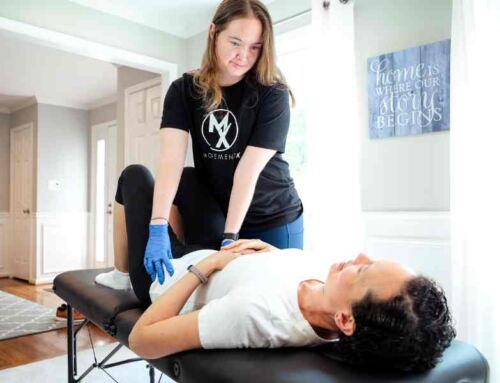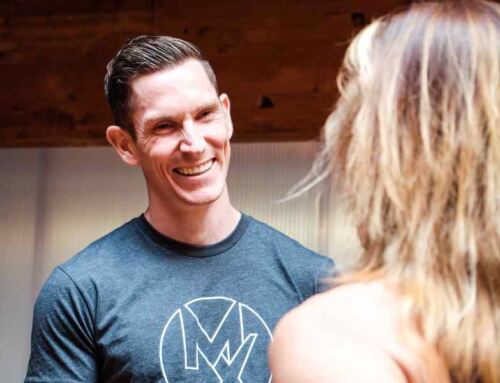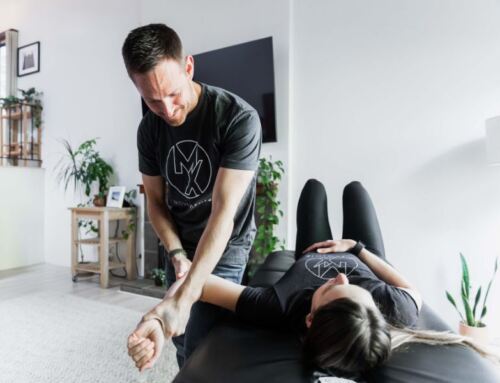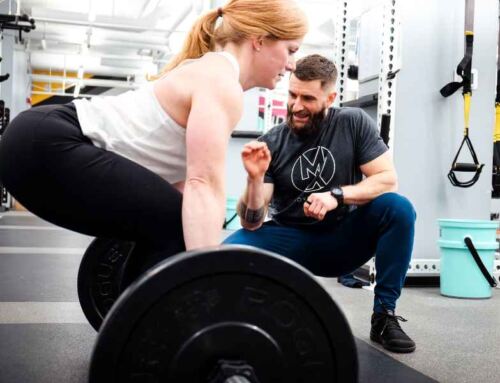Recovering from an injury can be a frustrating and daunting process for patients. It’s not made any easier by the confusing world of trendy recovery protocols, gadgets and supplements, often endorsed by industry experts or social media influencers. As industry experts in our own right, it’s the role of a PT to help patients quiet the noise and create best practices that will set them up for the best recovery outcomes.
Optimal recovery starts with a solid foundation of daily practices that will move the needle in a meaningful way for our overall health and function. I have nothing against cold plunges, saunas, curcumin supplements, or massage guns. They all have their place in the bigger picture of recovery, but reliance on them alone is like putting fancy trim and tinted windows on a car with no engine. They are, as the name suggests, SUPPLEMENTS to a foundation of healthy daily habits.
In this four part series, we will cover what I believe are the mission critical habits that create an ideal healing environment within the body. This first article will lay the foundation for these recovery practices. In the articles to follow, we will dive deeper into the science behind each and provide practical, actionable advice on how to get started making meaningful improvements in your daily habits!
The Big 3 Habits
To truly create an optimal healing environment for our bodies, we need to focus on three major domains:
- Sleep
- Nutrition
- Daily Movement
Together, these practices allow us to meaningfully influence our physiology and pain experience during the rehab process. Eating well, getting adequate sleep, and moving (not necessarily exercising) each day create the foundation from which we are able to not just survive, but thrive.
As a point of clarification, you cannot necessarily speed up the natural healing timeline of your body’s tissues. These follow a well-established biological clock. The best we can do is support them as much as possible along the way. We can, unfortunately, slow these processes down.
The choices we make around sleeping, eating, and daily movement can improve or impede our cellular functions that aid in tissue repair, can upregulate or downregulate our pain sensing pathways in the nervous system, and improve or diminish tissue tolerance to painful stimuli.
Sleep: The Cornerstone
I consider sleep the cornerstone of recovery because of its direct and profound impact on tissue repair and pain perception. Sleep is our opportunity to undergo nightly repair processes, not only for your body but for your brain as well.
Good sleep promotes the release of IGF-1, a critically important hormone that manages tissue growth and repair. In addition, sleep quality directly influences our pain experience by amplifying or diminishing the response of our nervous system to painful stimuli.
Sleep is one of the most powerful pain modulators we have, and a good night of sleep can significantly reduce the pain you feel, while a poor night can turn up your pain sensing pathways into overdrive (1).

Nutrition: Fueling Recovery
Nutrition’s role in pain is less understood but vitally important. Functionally, the food we eat serves to aid in muscle growth and repair, along with providing fuel for optimal cellular functioning. This is where food quality matters, because nutrient dense, whole foods provide not only the protein we need for muscle mass, but also the vitamins and minerals to help keep our cells working in tip top shape.
Where the research is unfortunately lacking relates to nutrition and chronic pain. Obesity and chronic inflammation from excessive consumption of ultra-processed foods are believed to be primary factors relating chronic pain to nutrition.
Specific pain conditions, including fibromyalgia, low back pain, and migraines, are highly correlated with poor nutrition. Despite the lack of a clear mechanism, new research is all coming to the same conclusion that nutrition should be a primary intervention for people suffering from chronic pain (2).

Move Well, Heal Well
Finally, daily movement is vital to optimal tissue recovery. Daily movement might look different based on your specific injury, but at the core of this pillar, we want to avoid total rest.
You have most likely heard the phrase, RICE with regards to injury management. This phrase was originally coined by Dr. Gabe Mirkin and stands for Rest Ice Compression Elevation. This protocol continues to be utilized by healthcare professionals as a first line against injuries, but current evidence, and Dr. Mirkin himself no longer supports this protocol. Specifically, a lack of early movement has been shown to delay recovery long term.
Instead, we want to encourage active recovery through daily movement with walking as the foundation. Getting your steps in each day is not only associated with improving general health outcomes, but can directly influence our pain tolerance. The easiest way to get started is to get three 10 minute walks each day (3).

Mastering the Basics
Each of these three daily practices will uniquely influence your recovery process, but at the same time, they play off of each other in a symbiotic way. Sleep can influence your hunger hormones, and your eating habits in turn influence your sleep. Moving more can have a positive benefit on your sleep and also help manage the way your body processes nutrients. What you eat can influence your energy and mood, making you more or less likely to get out and move.
If this is making your head spin, that’s okay! I want you to keep in mind one important thing. These are habits you are ALREADY DOING. Perhaps you are doing some or all of them well, but most likely you have some room for improvement. I am not asking you to go out and spend thousands on a red light device, install a sauna in your backyard, or attach a nitrogen infuser to your water bottle. I want you to pick one of the habits that I introduced and make that your starting point. In my upcoming posts, we will be taking a deeper dive into each of these habits and provide actionable ways to start improving them without totally upending your life.
Maximizing your recovery is not about the sexy new gadget or the trendy social media challenge. It’s about doing your best to master the boring, basic, but vitally important foundational habits that improve your health and maximize your body’s natural physiology. Your body knows what to do to heal from an injury, otherwise we would have died out long ago during our time as hunter gatherers on the African savannah. You think a lion cares if you have low back pain? Ironically, our modern environments of abundance, our social and working schedules, and advances in food production and medical development work against us as much as they support us. Replace pills, bed rest and your massage gun with healthy protein, fruits and veggies, a night of good sleep, and 10,000 steps per day and you have laid the foundation for the best possible recovery.
In our next article, we’ll dive deep into the first of our habits, sleep! You’ll learn about the close relationship between sleep and chronic pain (it’s not what you think), along with how pain affects your ability to amplify or diminish pain signaling in your body and its effect on tissue repair. Finally, we’ll cover actionable tips to improve your sleep quality so you can create a resilient environment of healing within your body to support your recovery process while in PT.
References
- Haack, M., Simpson, N., Sethna, N., Kaur, S., & Mullington, J. (2020). Sleep deficiency and chronic pain: potential underlying mechanisms and clinical implications. Neuropsychopharmacology : official publication of the American College of Neuropsychopharmacology, 45(1), 205–216. https://doi.org/10.1038/s41386-019-0439-z
- Elma, Ö., Brain, K., & Dong, H. J. (2022). The Importance of Nutrition as a Lifestyle Factor in Chronic Pain Management: A Narrative Review. Journal of clinical medicine, 11(19), 5950. https://doi.org/10.3390/jcm11195950
- Scialoia, D., & Swartzendruber, A. J. (2020, October 30). The R.I.C.E protocol is a myth: A review and recommendations. The Sport Journal. https://thesportjournal.org/article/the-r-i-c-e-protocol-is-a-myth-a-review-and-recommendations/







